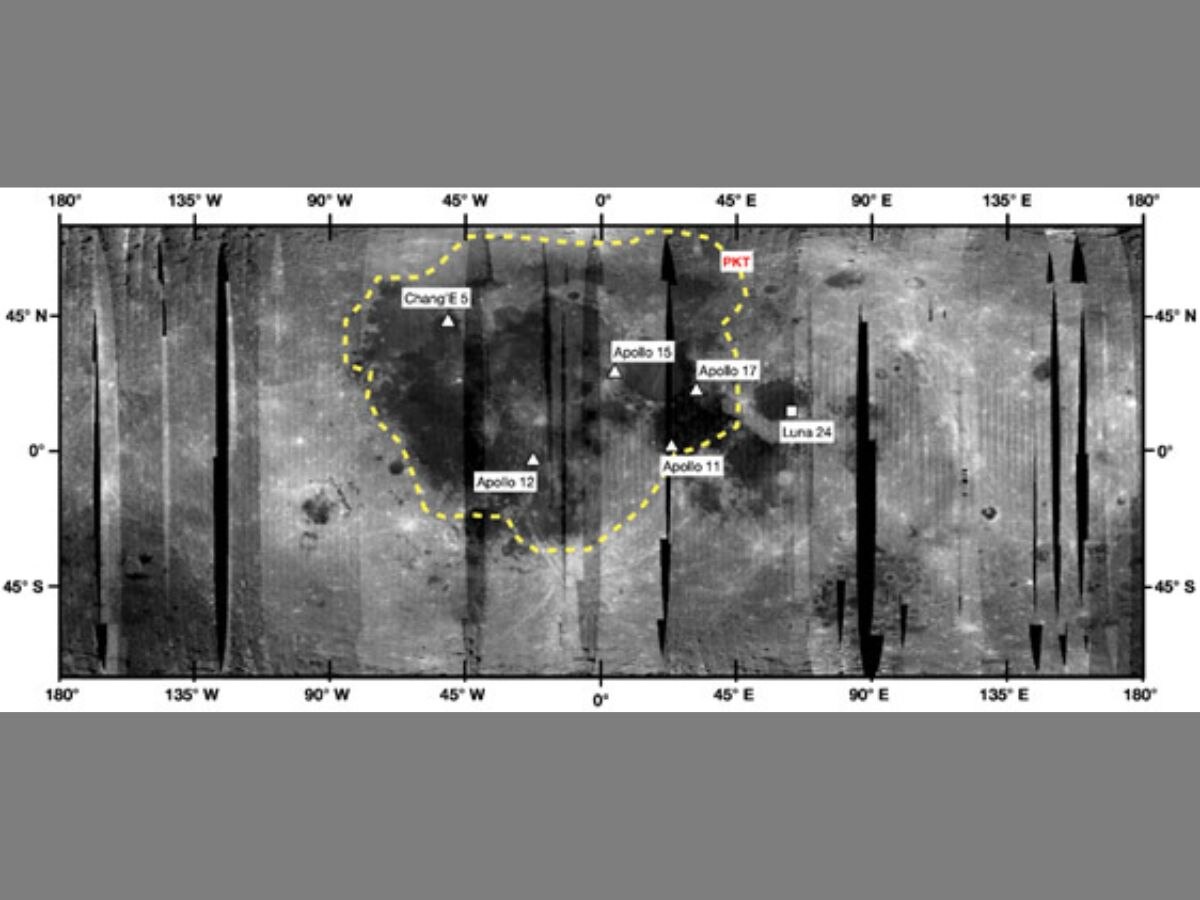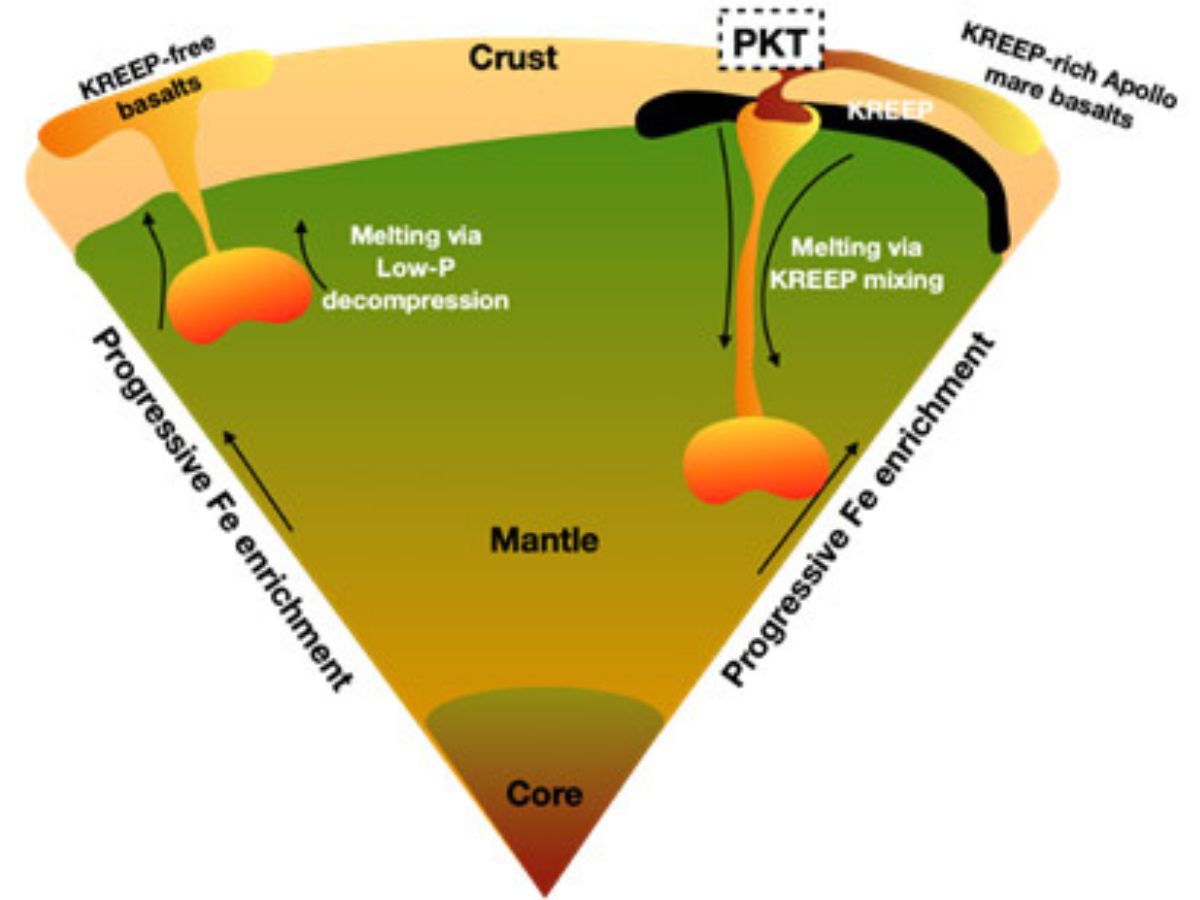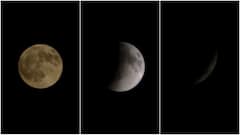Scientists From Physical Research Laboratory, US And Japan Find Unique Lunar Meteorites: Know Everything
The meteorites found by the scientists have a very low abundance of potassium (K), rare Earth elements (REE), and phosphorus (P), suggesting that they are different from those previously discovered.

Scientists from Physical Research Laboratory, Ahmedabad, India, the United States of America and Japan have found a unique group of ancient lunar meteorites, the Indian Space Research Organisation (ISRO) announced on Thursday, February 16, 2023. These are basaltic meteorites with a very low abundance of potassium (K), rare Earth elements (REE), and phosphorus (P), together called KREEP. Rare Earth minerals are a set of 17 metallic elements which include scandium, yttrium, and 15 lanthanides on the periodic table.
What are basaltic meteorites?
All meteorites hailing from the crusts of different planetary bodies in the inner solar system are a rock type common in Earth's crust: basalt. Basaltic meteorites contain a mixture of the minerals pyroxene, feldspar and olivine, according to the American Museum of Natural History (AMNH). The rocky crusts of different planets and asteroids throughout the solar system are rich in basalts, which are volcanic rocks.
The Physical Research Laboratory, known as the 'Cradle of Space Sciences' in India, was founded in 1947 by Dr Vikram Sarabhai, and is a unit of the Department of Space, Government of India, which carries out fundamental research in selected areas of physics, space and atmospheric sciences, astronomy, astrophysics and solar physics, and planetary and geo-sciences. Together with scientists from the US and Japan, PRL researchers studied a number of lunar meteorite samples.
The study describing the findings was recently published in the journal Nature Communications.
What are ‘mare’ regions on the Moon?
The Moon's dark regions, which are visible to the naked eye, are known as the 'mare'. They are remnants of a violent history of the Solar System. No records of these violent events are there on Earth. Since the Moon has changed very little in the last billions of years, Earth's natural satellite provides us a window to look into the universe's past.
According to ISRO, the large mare regions on the near side of the Moon that we see from Earth mainly consist of basalts, and hold the key to how Earth's natural satellite cooled and evolved. The mare regions can also unravel mysteries about the sources of heat that melted and crystallised basalts to the present-day rocks.
What is KREEP? What is PKT?
Earth has an extensive collection of mare basalts, thanks to the samples brought by some of the Apollo missions, and the Luna and Chang'E-5 missions. The basalts brought to Earth by some of the Apollo missions are 3.8 to 3.3 billion years old, and were collected from a region unusually rich in potassium, rare Earth elements and phosphorus. In other words, the region from which the basalts were collected is rich in KREEP.
According to ISRO, the region is known as the Procellarum KREEP Terrane (PKT).
The region is rich in radioactive elements that provide heat to melt rocks. This resulted in KREEP-rich basalts.
What makes meteorites studied by the team unique?
The meteorites found by the scientists from the Physical Research Laboratory, the US and Japan have a very low abundance of KREEP, suggesting that the meteorites must have come from a region different from PKT.
What samples did the team study?
The samples studied by the scientists include Lunar Meteorite Asuka-881757, Lunar Meteorite Kalahari 009, and samples collected by the Russian Luna-24 mission. Lunar Meteorite Asuka-881757 was found in 1988 in Antarctica, and collected by the National Institute of Polar Research, Japan. Lunar Meteorite 009 was found in 1999 in the Kalahari Desert in South Africa.

The above image is a surface map of the Moon made using data from the Chandrayaan-1 mission. The map shows two distinct regions.
The confined yellow dashed line shown in the image marks the PKT on the nearside of the Moon. Most of the returned lunar mare basalts are from the PKT, and were formed due to mantle melting by radioactive heating.
How were the meteorite samples studied by the team formed?
The samples studied by the researchers are KREEP-free basalts that originated away from the PKT. They also studied meteorites from unknown locations, located away from the PKT. According to ISRO, the samples studied were not formed through a radioactive heating mechanism.
The basalts must be a result of low-pressure melting in the Moon, similar to those in other terrestrial bodies, such as Earth and Mars, the calculations show. Also, the basalts are likely to have originated from a cool, shallow and compositionally distinct part of the lunar interior.

The above diagram depicts the difference in formation mechanisms of KREEP-free basalts away from the PKT, which is rich in KREEP basalts. PKT basalts are formed through radioactive heating at a great depth. Meanwhile, the studied lunar meteorites were formed by low pressure or decompression melting.
The study has provided a global perspective on the thermal evolution of the Moon in comparison to the regional PKT.
The Moon's interior melted in the form of basalt magmatism about 4.3 to 3.9 billion years ago. Later, about 3.8 to three billion years ago, the melting of the Moon became localised, occurring in the PKT region.







































